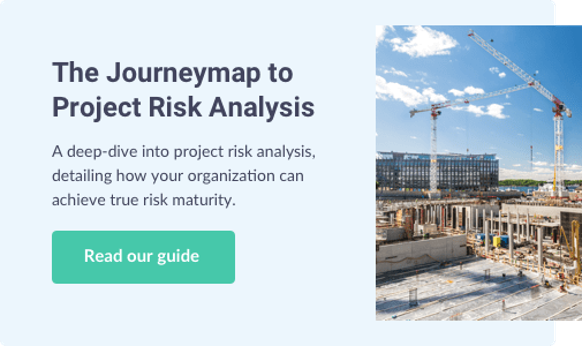Effective risk management is a skill that evolves over time, requiring continuous development and practice. In the journey of developing and maintaining risk capability, project leaders must be vigilant to avoid the pitfalls associated with using inadequate risk assessment tools.
Project leaders and risk practitioners must navigate the potential pitfalls of using inadequate risk tools. In this journey, capability assessments can prompt interventions to improve risk management tools, ensuring their effectiveness.
Qualitative Analysis Tools
Starting with qualitative risk analysis skills is crucial for capturing risks accurately before delving into quantitative analysis. Overreliance on ordinal values, risk scores, or matrices, especially for critical decisions, can lead to critical decision-making errors. In his key book, "The Failure of Risk Management," Douglas Hubbard outlined unintended effects of using the wrong risk assessment tools at the wrong time. Notably, qualitative scoring mechanisms risk issues like range compression, partition dependence, presumption of regular intervals, and presumption of independence.
Unintended Effects of Using the Wrong Risk Assessment Tools (at the wrong time)
- Range compression adds imprecision by grouping a wide range of variables and potentially exaggerates otherwise relatively small changes.
- Partition dependence describes how inaccuracies are driven by requiring risk assessments to fall within a fixed range of values, which removes the possibility of bias in the model.
- Presumption of regular intervals occurs when there is an assumption that incremental scoring values represent approximate relative magnitudes of risk exposure, and as a result, can mischaracterize or distort the reality of a situation.
- Presumption of independence describes how qualitative scoring mechanisms are unable to model dependencies or correlations between attributes or related risks.
Transitioning towards risk maturity involves moving beyond simple qualitative analyses. Christian Smart in his book “Solving for Project Risk Management: Understanding the Critical Role of Uncertainty in Project Management,” argues that risk managers and their teams should conduct a full probabilistic risk analysis, so that they are able to account for multiple sources of uncertainty when making consequential decisions.
Moving Toward Risk Maturity
Organizations with established risk management capabilities often face the risk of status quo bias and cling to outdated risk assessment tools. A reluctance to embrace modern solutions, like Safran Risk, can result in system crashes, increased costs, decreased productivity, security risks, and compliance issues. Using outdated tools increases the potential for self-inflicted harm that distracts teams from the primary task of analyzing risk.
Risk teams without modern risk assessment tools run the risk of diverting attention from primary tasks or potentially incurring more significant costs than they would have done by investing in up-to-date software. Investing in modern, best-in-class software tools like Safran Risk can prevent these avoidable issues and allow teams to focus on effective risk analysis.
Safran Risk: A Modern Solution
Safran Risk offers a best-in-class alternative, addressing the shortcomings of legacy tools. The software not only prevents the issues associated with outdated tools but also combines cost and schedule risk data in a structured and consistent manner. The machine-readable XML format enables organizations to position themselves as future-ready, enabling risk assessment teams to share standardized data with specialized data science teams for advanced analytics and better overall risk assessment outcomes.
Conclusion
For senior project managers, equipping project management teams with best-in-class risk assessment tools is paramount. Safran Risk stands as a modern, comprehensive solution, ensuring organizations are well-equipped to navigate the complexities of risk.
Reach out and contact us for expert advice to stress-test your assumptions and navigate the complex landscape of risk management effectively.
What's Next?
If your organization is facing uncertainty with projects, and seeking ways to embrace continual improvement, our top tier software tools can help you manage critical project risks. If you want to optimize your organization’s ability to manage successful projects, contact us to find out more about Safran Risk, and let us tailor a strategy so you can improve your risk management capability with the guidance of a trusted advisor.



